Maybe there is no such thing as the perfect trout stream. After fly fishing Yellowstone’s Slough Creek, I took some time to reflect on our time here. My conclusion: every serious fly angler should make the pilgrimage to Slough Creek in Yellowstone National Park at least once.
Hiking on Yellowstone's Slough Creek Trail
The Slough Creek Trail (2K5) follows an old wagon road for 9.9 miles. Parking for the trailhead is on a dirt road that leads to the Slough Creek Campground.

I was exhausted from two long days of fishing in Yellowstone National Park, and sound asleep when the 5 am alarm reverberated through the tent. On this first day of August, we emerged from our sleeping bags to a brisk 48 degrees. Today’s plan was to hike into the fabled first meadow of Slough Creek and sight fish for native Yellowstone Cutthroat trout. The plan also involved another crucial element: getting there before a possible wave of other anglers. No time for hot coffee or breakfast. I reluctantly dressed, brushed my teeth, and trudged toward the passenger seat of Joel’s Subaru. Under the shadow of darkness, we slipped quietly out of Pebble Creek Campground and began the sixteen mile drive to Slough Creek Trailhead. If we were lucky, we would avoid any wildlife jams and arrive in about thirty-five minutes.
It wasn’t long before we spotted the sign for Slough Creek Campground. Here, we turned down a gravel road for the final 2.3 miles. We arrived before dawn and were pleased to find an absence of other cars in the parking lot. Our trailhead breakfast was sublime. Three days earlier, a stop in Billings Montana resulted in a wild blueberry pie from Stella’s Kitchen and Bakery. We had been saving the pie for a morning like this one. Its convenient calories would come in handy on the 2.4 mile hike into Slough Creek’s first meadow. Shortly after gearing up, we devoured the entire pie. No fork. No refinement. Just the ooey, gooey goodness from juicy berries encased in a flaky crust.

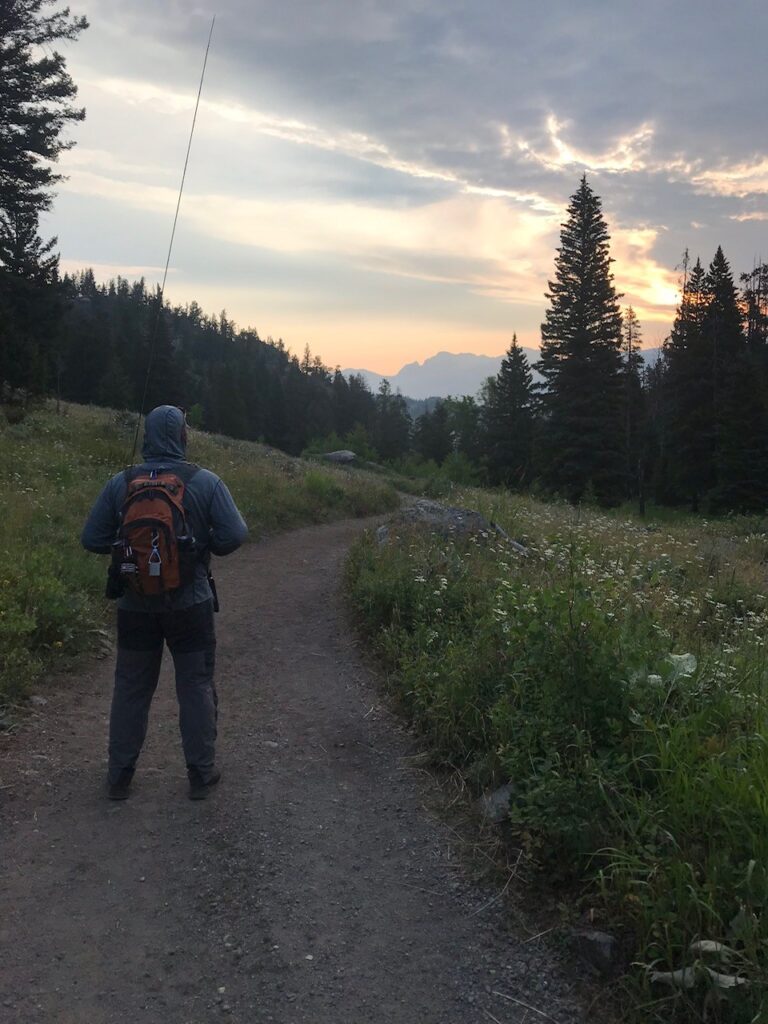
As we began our rocky ascent from the trailhead, I was definitely moving with a purpose. Maybe it was the anticipation of seeing Slough Creek for the first time. Maybe it was the mosquitoes. The Slough Creek Trail begins in a low, flat area adjacent to the Slough Creek Campground. Here, the creek slows, widens, and is joined by Buffalo Creek from the north. The area has plenty of water and plenty of mosquitos. If you go, bring plenty of bug juice! Despite using mine and being covered by long sleeves and a hood, I felt overwhelmed. With each step, more and more of them accumulated on the fabric of my hoodie. Dozens gave way to hundreds. I did the only thing that made sense. I walked faster!
In my desperate attempt to out-hike the mosquitoes I selfishly forgot about Joel’s knee. A work injury had been limiting his movement for the last month and he reminded me that he could not keep up such a vigorous pace. We had climbed high enough to get beyond the swarm. It was time to slow down. Time to enjoy the journey. For the most part, it was a rather enjoyable hike. Nothing strenuous after the first mile which gains about 400 feet in elevation.
We reached Slough Creek’s first meadow after an hour of moderate hiking. As we emerged from the timber the sun had not quite broken the horizon. Slough Creek’s first meadow lay out before us. A low ridge punctuated by rocky outcrops rose skyward just beyond the creek . Beyond the ridge came a sound that stopped us in our tracks.
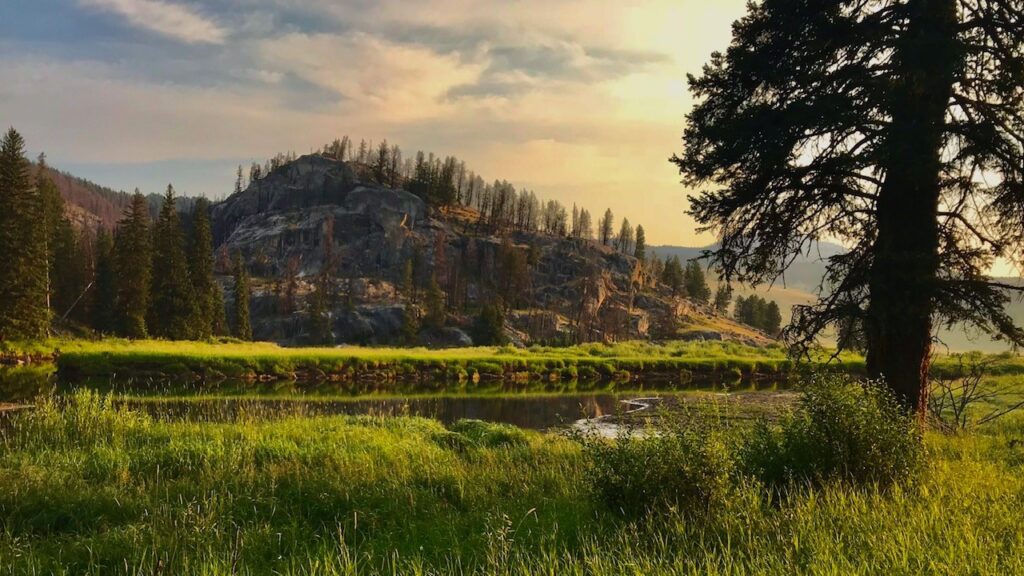

Fishing Yellowstone's Slough Creek
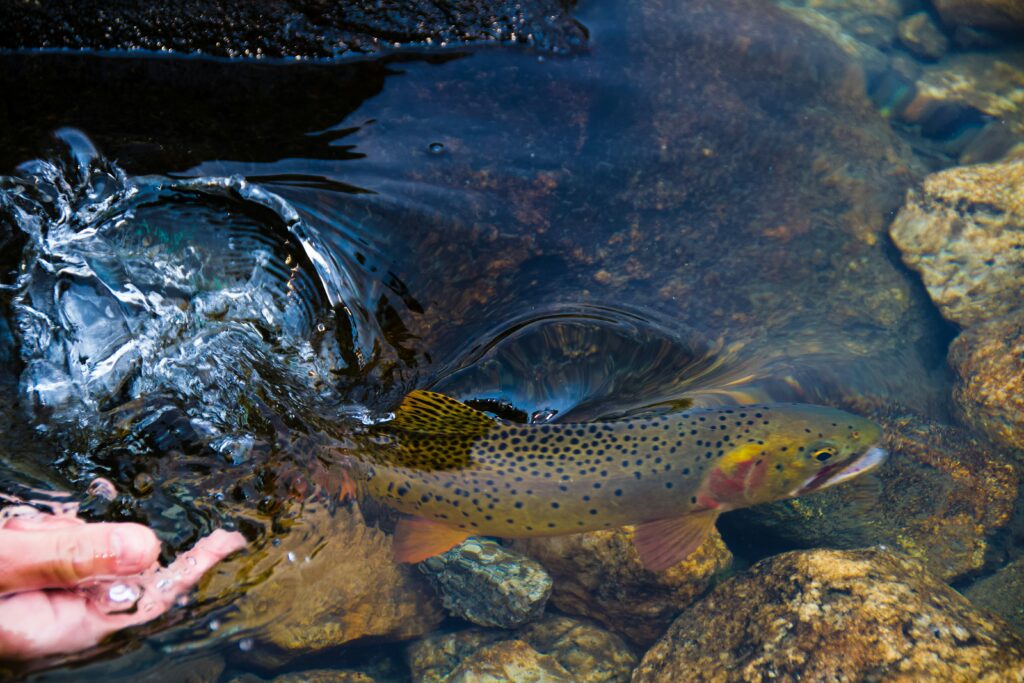

Slough Creek is among the most famous fisheries anywhere in North America. It is a unique fly fishing experience that you are not likely to forget. Most of the fishing in Yellowstone’s Slough Creek is dry fly fishing in open meadows. In these meadow sections, Slough Creek is typically 20-30 feet wide. Crystal clear water meanders from bend to bend, revealing beautiful Yellowstone Cutthroat trout that average between 14 and 16 inches. If you enjoy the added excitement and challenge of sight fishing, Slough Creek provides this as well.
Fishing Slough Creek involves hiking several miles into Yellowstone’s backcountry. In many ways, this is makes Slough Creek such a special place.
As the sun’s rays began painting the valley we left the trail and began making our way toward the water. We were following a game trail through waist-deep grass, and soon found ourselves standing on a grassy bank some 3-4 feet above the glassy surface. I glanced upstream. Golden, sinewy shapes began to appear.
Camping Along Yellowstone's Slough Creek
Slough Creek Campground is a primitive campground near the fabled fishing of Yellowstone’s Slough Creek. The campground sits at an elevation of 6250 feet. The sixteen sites at Slough Creek Campground must be reserved in advance for $20/night. The campground is open from June 15 to October 14 and its limited amenities include vault toilets and trash pickup. This is a generator-free campground, making it very quiet. Combine that with a location close to the Lamar Valley, a prime Yellowstone wildlife corridor, and there is a decent chance you might hear wolves howling during a stay at Slough Creek Campground!
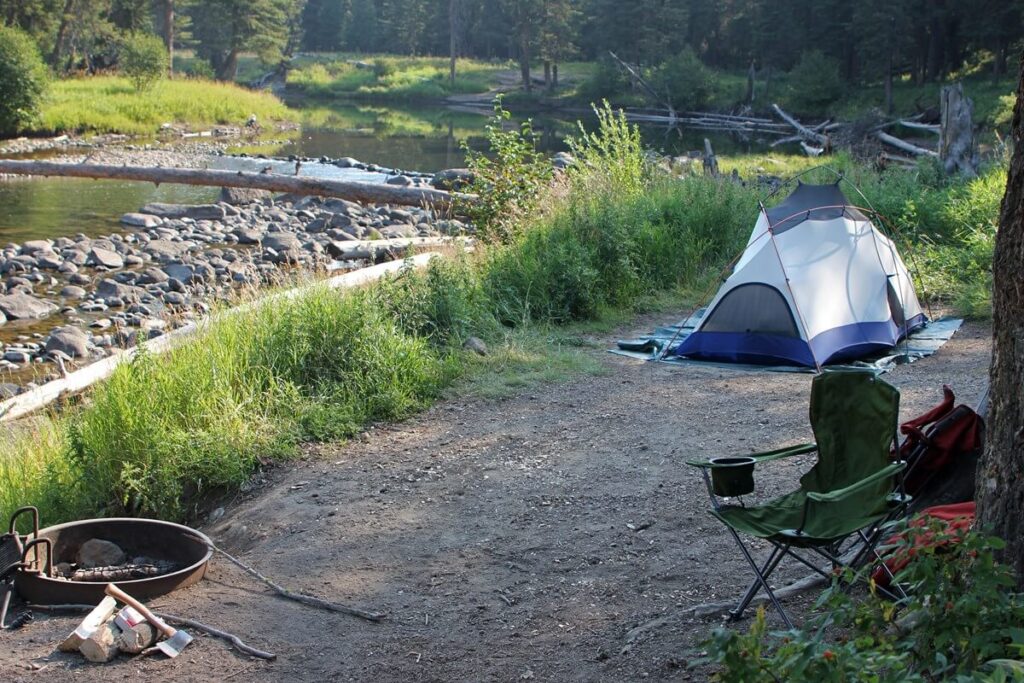
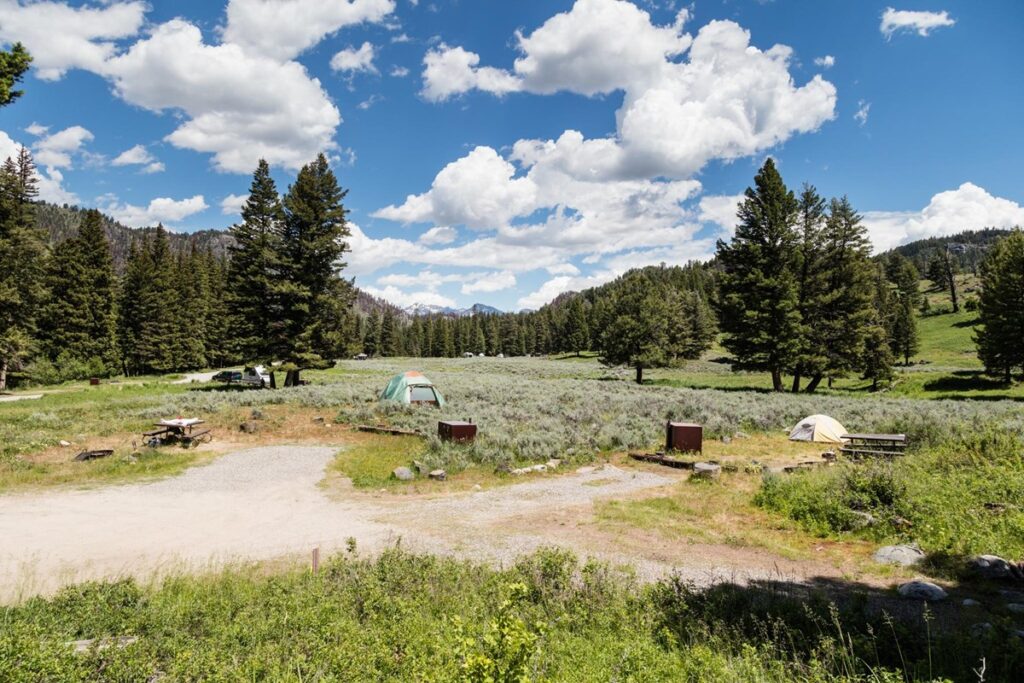
Another option is to reserve one of seven backcountry campsites (2S1, 2S2, 2S3, 2S4, 2S6, 2S7, 2S8) that lie beyond Slough Creek’s first meadow. Many consider this to be the best option for fishing the second and third meadows, as these require longer hikes. A backcountry permit is required for all overnight stays in the Yellowstone backcountry. Backcountry permits are reservable in advance and reservations are highly recommended. However, you can obtain a walk-up permit at a Yellowstone Backcountry Office. In fact, Rod and Gabe, our neighbors from Pebble Creek Campground a few nights earlier, had obtained a walk-up permit and were headed up to backcountry site 2S2. Consult the Yellowstone Backcountry Trip Planner for detailed information about backcountry campsites, permits, and safety.
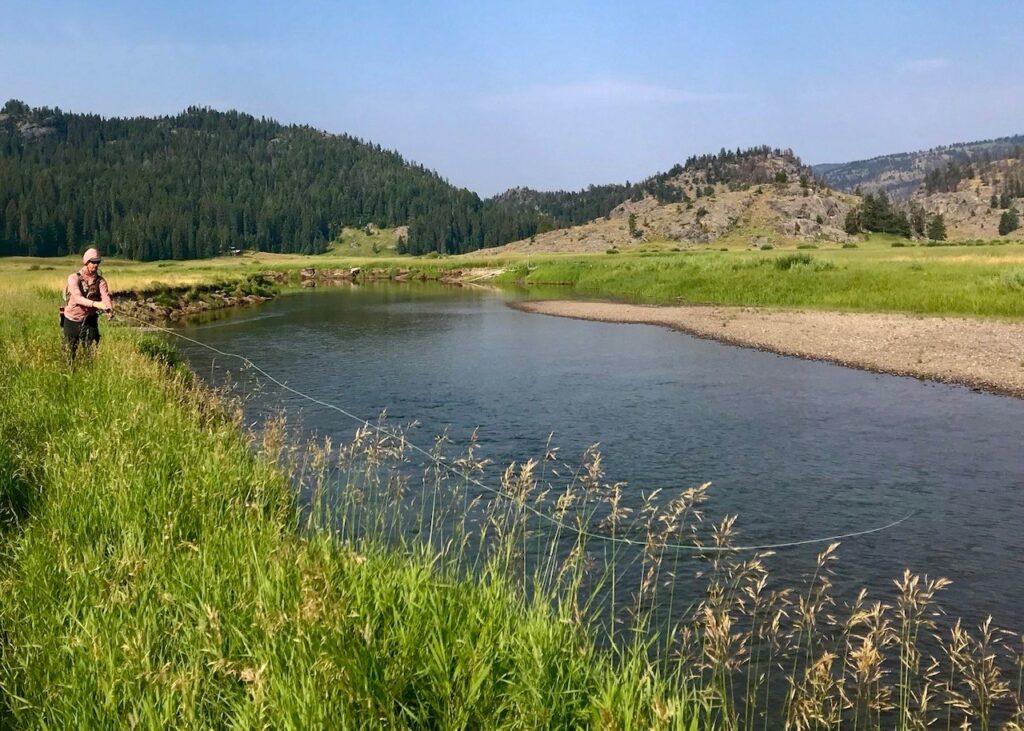
I’m pretty sure this is where God fishes!